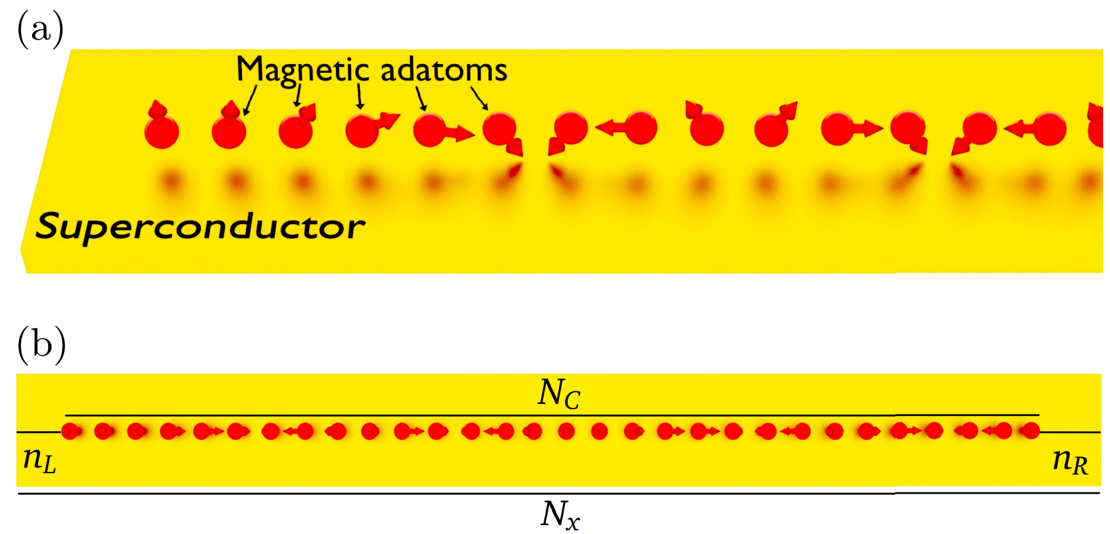In this recent article published in Physical Review B, Richard Heß et al. (University of Basel) study the prevalence of trivial zero energy states (ZESs) in a non-uniform helical spin chain which is deposited on the surface of a conventional superconductor. In particular, the authors show that a varying rotation rate of the magnetic moments can be mapped in a one-dimensional model onto a spatial variation of the spin orbit interaction strength and potential in the Rashba nanowire. These non-uniformities are known to stabilize ZESs in nanowires and prevent therefore the unambiguous identification of Majorana bound states. While the results for the low-dimensional model match with the prediction of trivial ZES in the one-dimensional Rashba nanowires, the authors find that ZESs due to varying rotation rates of magnetic moments, are less abundant in higher dimensional models.
Phys. Rev. B 106, 104503 (2022) and https://arxiv.org/abs/2204.02324

Figure above: Helical spin chain system: (a) Magnetic adatoms (red) are placed on the surface of a bulk superconductor (yellow). The adatoms form a helical spin chain with a rotation rate that can vary along the chain. (b) Geometry of helical spin chain used in this manuscript (number of sites shown is not to scale). The full system has Nx sites in the x direction with magnetic adatoms deposited on NC sites forming a helical spin chain. In general, the helical spin chain is embedded in the underlying superconductor with nL sites on the left side of the system and nR on the right.












